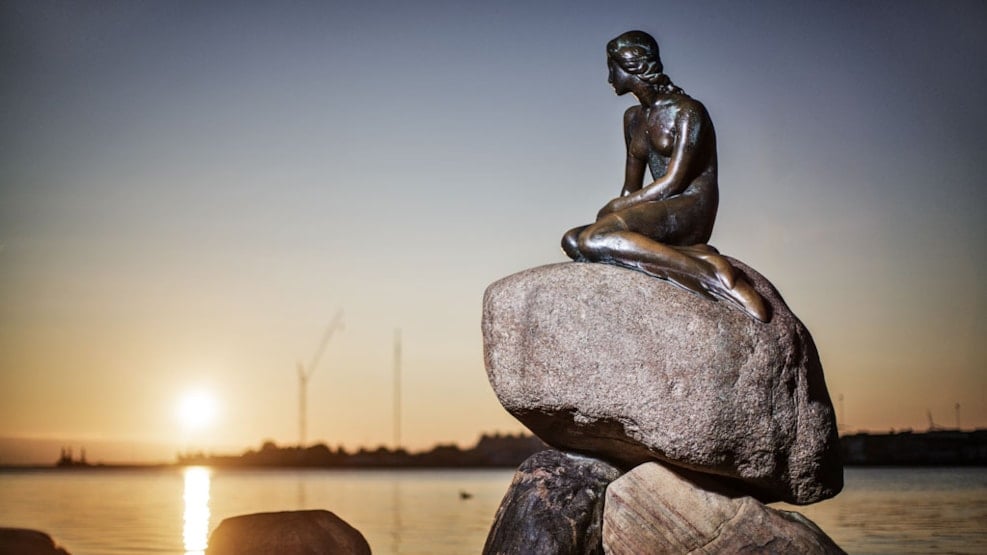
The Little Mermaid
The Little Mermaid – Copenhagen’s Most Famous Sculpture
Walking down Langelinie Pier, you’ll find The Little Mermaid gracefully sitting on a rock in the water, gazing longingly out over the shore. The sculpture was made in 1913 by Edvard Eriksen and was gifted by the Danish brewer Carl Jacobsen. Since then, The Little Mermaid has become one of Copenhagen’s most iconic landmarks and a city symbol. If you know the timeless fairy tale by Hans Christian Andersen, you’ll immediately recognize the connection – the Little Mermaid sculpture is inspired by his story of the same name. Every day she sits on her rock, capturing the essence of Andersen’s mermaid, a figure shaped by quiet longing, love and the deep sacrifice at the heart of the story.
Quick Facts
- Getting there: 15-minute walk from Østerport Station
- Tip: Combine with a harbour tour for the full maritime experience
- Don’t miss: Close to The Little Mermaid, you’ll find The Citadel and The National Gallery of Denmark.
Frequently Asked Questions
When was The Little Mermaid unveiled?
She was unveiled on 23 August 1913 as a gift from brewer Carl Jacobsen to the City of Copenhagen.
Who created the sculpture?
The mermaid was sculpted by Edvard Eriksen. The face was inspired by ballerina Ellen Price, while the body was modelled by Eriksen’s wife, Eline.
Why is she linked to Hans Christian Andersen?
The sculpture was inspired by Andersen’s 1837 fairy tale about a mermaid who gives up her underwater life for love. Jacobsen was moved by a ballet performance of the story at the Royal Danish Theatre.
Has The Little Mermaid ever been vandalised?
Yes, several times. She has lost her head twice, had an arm sawn off, and has been painted over. Each time, she has been carefully restored to her place at the harbour.
Is The Little Mermaid Copenhagen’s most visited attraction?
As one of Copenhagen’s most photographed and visited monuments, she continues to attract the attention of millions of tourists each year.
What's the best way to get to The Little Mermaid?
The Little Mermaid is just a 15-minute walk from Østerport Station. You can get to Østerport by metro or S-train, depending on your starting point.
History and Legends
Carl Jacobsen’s fascination began after watching a ballet version of The Little Mermaid. Captivated by both the story and the performance, he commissioned Edvard Eriksen to bring the mermaid to life in sculpture. Ellen Price, who danced the lead role in 1909, inspired the face but declined to model nude. Instead, Eriksen’s wife Eline posed for the body. The mermaid has since become a global icon of Copenhagen, despite repeated vandalism. Her resilience and continual restoration reflect the city’s commitment to preserving its cultural symbols.
Why Visit The Little Mermaid?
Visiting The Little Mermaid is more than ticking off a postcard sight. It’s about connecting with Denmark’s literary heritage, Copenhagen’s harbour history, and one of the most enduring love stories in world literature. Whether seen from the shore or from a passing boat, she remains a symbol of longing, transformation, and the soul of Copenhagen.